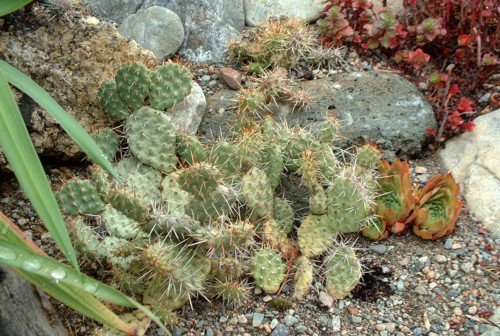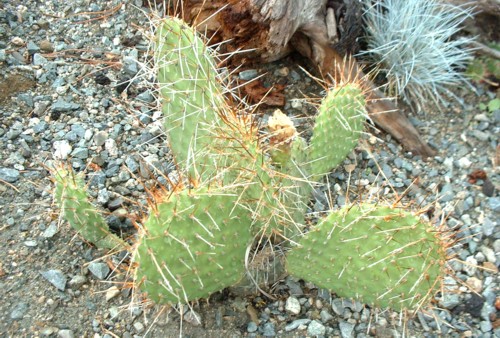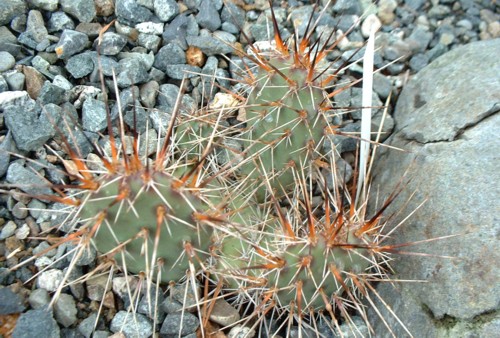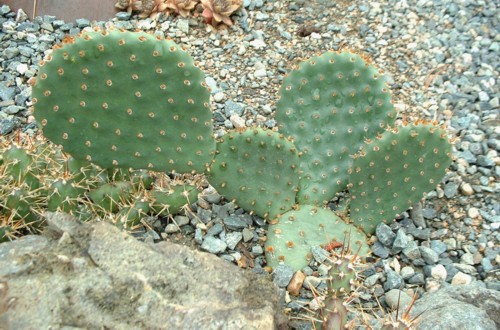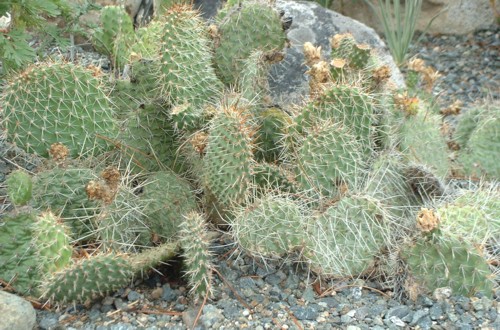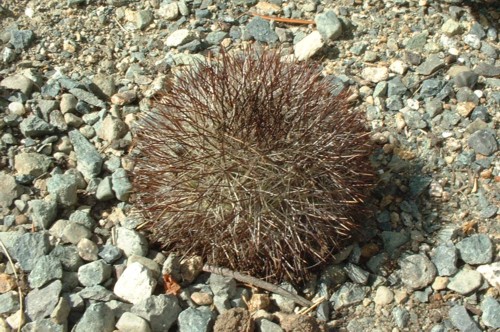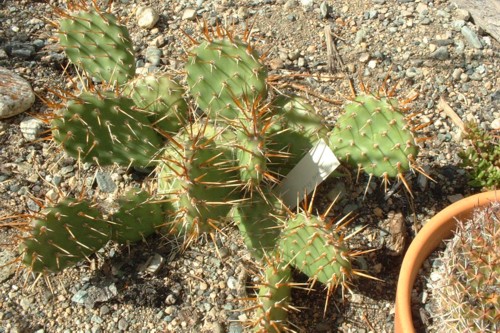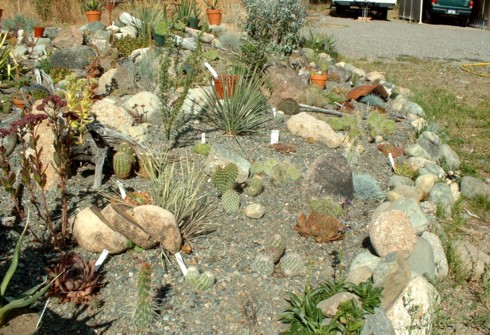|
Jay Akerley's Garden, Chain Lake, British Columbia
This garden exemplifies what can be achieved in a very cold climate as long as there is reliable winter snow cover. This area between Princeton and Summerland, BC, at about 3,000' a.s.l., may see winter temperatures drop as low as -40°F some years. However, the winter snow cover is like clockwork, beginning every year in October and melting away in May. Even in the mildest winters, very little melting occurs, enabling low-growing plants to thrive without having to endure any really severe cold or winter rains. When the snow melts in spring the cacti enjoy the moist, sharpy drained soil they like, and long sunny days during the growing season. You can see more pictures of Jay's garden here, including some images of the cacti in bloom. |

Plants and Gardens Gallery |
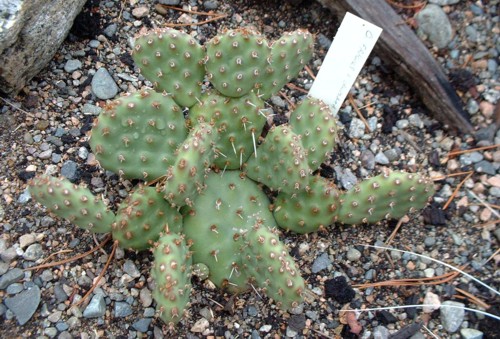
Opuntia fragilis var. denudata, a spineless form of brittle prickly-pear.
One of those British Columbia native Opuntias whose taxonomy is confounding. Some botanists have called this O. polyacantha, but it looks different from any form of that species found in the United States: it has smaller pads and is much more brittle. It could be O. fragilis if the pads weren't so flattened. Sedums and Sempervivums also thrive here.
Echinocereus fendleri.
A more typical form of Opuntia polyacantha.
Echinocereus triglochidiatus.
The Alberta native form of Escobaria vivipara.
An unknown Opuntia species.
Opuntia compressa from a collection in Pt. Pelee, Ontario.
The Alberta native form of Opuntia polyacantha, which looks more typical for this species.
Pediocactus nigrispinus. Jay swears that he will find some British Columbia native Pediocactus sometime, but we're still waiting!
Echinocereus reichenbachii.
Opuntia 'Nameo Rose', an attractive fragilis x polyacantha hybrid.
A wider shot of Jay's cactus garden. |
|
